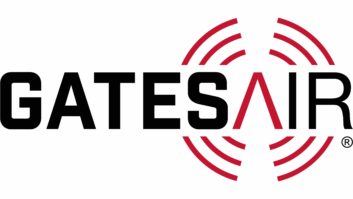Have you heard about the Broadcast Positioning System?
The technology, developed by the National Association of Broadcasters, leverages the ATSC 3.0 digital TV system to transmit timing and location data. The association says BPS is a cost-effective terrestrial complement to traditional GPS satellite-based services.
“The reliance of U.S. critical infrastructure on time distributed by GPS satellites presents an incredible and increasing risk for the country,” according to an NAB white paper that lays out its argument. “Broadcasters have a long history of collaborating with the government on critical communication services, such as the Emergency Alert System, and the BPS is a terrestrial Position, Navigation and Timing service that can be a new addition to this collaboration.”
The IEEE Broadcast Technology Society and NAB have produced a free webinar about BPS, as Radio World’s Nick Langan reported recently here on the Radio World website.

In the webinar, released in January, IEEE BTS and NAB highlight advantages that include BPS’s resistance to jamming or spoofing and other GPS satellite disruptions, including what is referred to as the Kessler syndrome.
“Unlike a GPS satellite in space, BPS signals broadcast from a TV tower on the earth’s surface to transmit time from a known location,” according to NAB.
“BPS relies on modern broadcast television infrastructure using ATSC 3.0, an international standard from the Advanced Television Systems Committee, and as a broadcast service it requires only a passive receiver to use (no internet or other two-way connection is required) and can support an unlimited number of simultaneous users.”
Among those speaking in the webinar are Sam Matheny, NAB’s executive vice president and chief technology officer, Tariq Mondal, NAB’s vice president of advanced technologies, and Bob Weller, NAB’s vice president of spectrum policy.
Brett Jenkins of Nexstar and Harvey Arnold of Sinclair Broadcasting also provide perspectives from existing broadcasters. It’s a substantive presentation, running about 2-1/2 hours.
According to the webinar, 103 ATSC 3.0 TV stations are operating in the U.S. reaching 80 broadcast markets. Approximately 77% of the country’s television households are within reach of these stations.
NAB states it has been instrumental in advocating for BPS’s adoption and is collaborating with technology partners.
But it says congressional support is needed for more rapid ATSC 3.0 adoption to enable the ability for stations to use BPS.
The BPS service is being tested in the field. An installation at WHUT(TV) in Washington, D.C., is used as an example, with equipment at WNUV(TV) in Baltimore used to receive the BPS signal. Jeff Sherman of the National Institute of Standards and Technology speaks in the webinar about test results.
You can view the webinar at the IEEE Broadcast Technology Society’s website. Or if you are interested in the subject but are in more of a hurry, here’s an NAB white paper that summarizes it.
We can expect to hear more on this topic at the upcoming spring NAB Show too.







